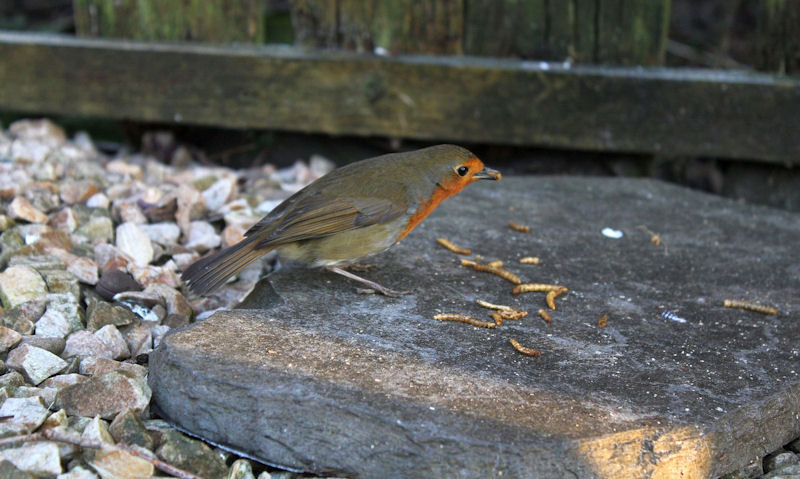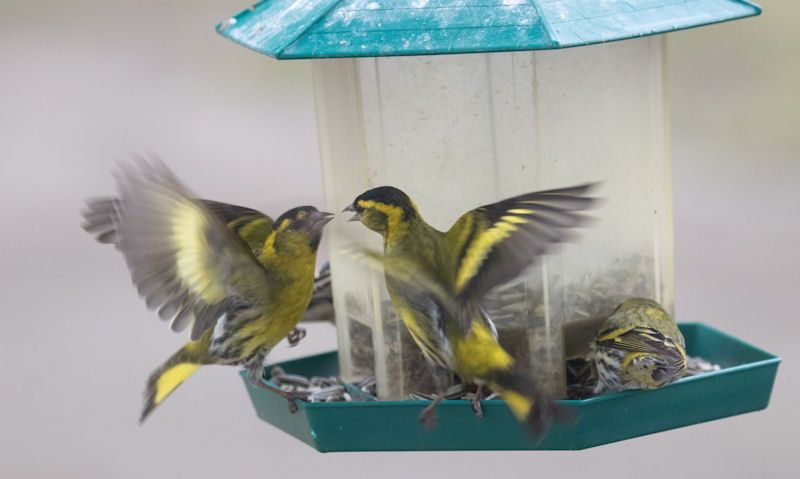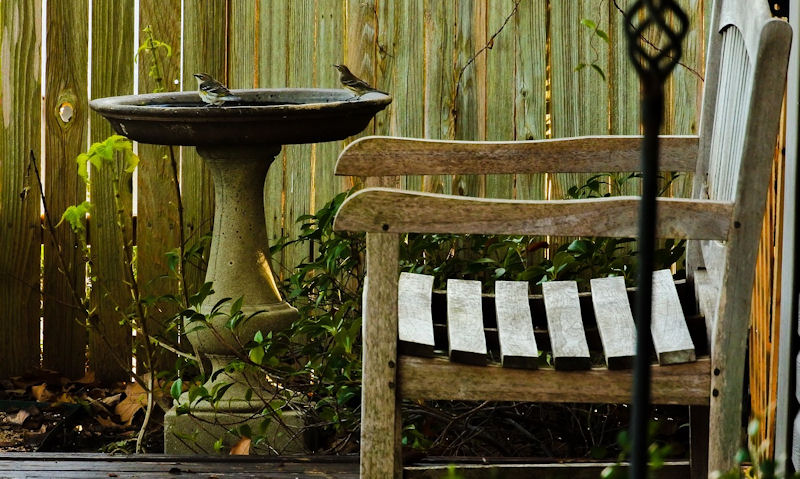How to feed dried mealworms to birds
Lots of fun and interesting ways to feed your precious dried mealworms to garden birds, but to do so can either restrict to cater to all.
How to feed dried mealworms to birds in your garden would be to simply throw them over the lawn to cater to ground feeding birds. Follow that up by added them to a bird table or in an open mesh tray or specialty mealworm feeder. Mix mealworms to other types of bird feed, but rehydrating them is the way to go.
If you have a sachet of dried mealworms for wild birds ready to go, then don't waste time as you are missing a great opportunity.
Dried mealworms are liked by many common garden birds, but so to with those that don't use bird feeders at all, or stop by for long.
Throw dried mealworms over the lawn or patio to cater to all these birds, including the more agile wrens or nuthatches.
Locate dried mealworms up high any other time to keep out of harms way. Place on fence post then or add to mesh tray mounted to bird feeding station.
Birds love mealworms in their numbers, while mealworms are good for birds - so you are going to find them to be very popular all year round.
Don't restrict their use by adding them to restricted locations, simply throwing over the lawn is good for many, while adding to a hanging tray that is open to the elements is very effective.
No shortage of where to buy dried mealworms either, with most top pet shops or even supermarket's offering up branded options.
Snapped up off ground
Some wild birds not only prefer to feed off the ground but in fact are not capable of eating off hanging bird feeders at all.
Its therefore imperative you throw dried mealworms over the lawn or patio for ground feeding garden birds to peck at over the course of the day.
Example of the birds who eat mealworms off the ground are robins, thrushes and dunnocks - along with blackbirds who have trouble feeding off feeders full of mealworms.
Where you decide to throw the mealworms is not at all important providing its near a location currently occupied by feeding birds - so by the bird table or bird feeding station.
Underneath either one would be a good place to throw over some dried mealworms, but so to in any grass or natural growth on the edges of the garden.
Ground feeding birds may also be comfortable landing on a high surface to quickly swoop down to pick mealworms up in the process.
High up on open tray
Talking about feeding garden birds high up, you can also feed tasty dried mealworms for wild birds off a hanging bird feeding tray.
It could be a metal mesh feeding tray hanging off a bracket or branch, or similarly it could be one that doesn't hang - but is mounted to a bird feeding station pole.
Where many common garden birds have difficulty in feeding on hanging feeders where mealworms added - its a little easier for them to access what is essentially a hanging tray open to the elements.
Its not going to fill up with water or moisture of any kind because of the mesh tray, but the three or four chains holding it up are going to offer all the room needed to enter in-between them with ease.
To restrict smaller birds to feed on an open tray only, you can think about using what is an hanging feeding tray with dome, as to protect the feed from the elements.
Undercover on bird table
You can't go wrong by taking full advantage of your wooden bird table on a stand, as its sure to cater to as many wild birds who are capable of using it.
Dried mealworms can be placed under a bird table with a roof, an open bird table or a mounted one - either way mealworms can be added.
Mealworms may not be enough for most wild birds who land on the bird table, but the benefit of a bird table is indeed adding as much bird feed as you see fit - so be sure to add as little mealworm at time to avoid waste.
Birds who prefer to feed off the ground still will, so if you can throw dried mealworms over the ground - directly beneath the bird table - no bird species is going to miss out.
No shortage to the wild birds who use birds tables or likewise, mealworms; so to use both is going to see a lot of success.
Hang up specialty mealworm feeder
While it can be restricted to only the birds who feed off hanging bird feeders, you can still make use of a specialty dried mealworm bird feeder to hang up on a bracket.
Its not ideal but if you must for the sake of convenience, safety of feeding birds, or to keep feed out of reach of rodents - then do use a mealworm feeder.
Made similar to a seed feeder, those feeders made to hold mealworms can hold all the mealworms needed in one setting, but you can use less in a way to reduce waste.
Hang up only the best bird feeder for mealworms in the clear plastic tube kind, or the more accessible open tray.
Accessibility is limited to birds who also eat seeds, so if they are capable of using a seed feeder, they can perch on a mealworm feeder.
Mealworm based suet
So many ideas going through my head right now with what you can do with mealworm based suet - but here's just a few to get the imagination flowing.
But as a reminder, cheap suet in pellets, blocks or in fat ball form use mealworm as the main ingredient - similarly, seeds or nuts are other popular main ingredients.
To use mealworm suet pellets you can use them loose or insert in a suet pellet bird feeder - or an open mesh tray.
However, to use what is referred to as a suet block or cake bird feeder is a must for using cheap mealworm suet blocks in a special open gap cage.
What else you can use, and something you may be more familiar with, is a fat ball feeder - which is one of three of the most popular bird feeders in use, within the UK.
This fat ball feeder can hold 4 to 6 balls, but where you hang it is going to play a part. So be sure to hang a suet bird feeder on a bird feeding station or off a tree branch.
Mealworm suet in coconut halves
More of a novelty way of feeding mealworm based wild bird food to garden birds again is through the use of suet.
Only this time the mealworms are smushed into a helping of suet, which in turn in then added into coconut halves.
Quite a combination I know, but its a very successful way to feed dried mealworms to birds.
Its an out of the package deal, where it involves using the rope attached to each coconut half to then hang off a bracket - or better still a branch of a tree or hedgerow.
You may not of come across this kind of thing before, but coconut halves can be bought in Tesco or other supermarkets, so are widely available.
Not all coconut bird feeders sold are mealworm based, so do look out for it on the listed ingredients.
Yummy re-hydrated dried mealworms
Rather than feeding dried mealworms to garden birds in the traditional sense; let's first make them more juicy.
Believe it or not you don't have to use the dried mealworms as is, instead you can add moisture to them to make them more yumcious to birds.
You need to know how to rehydrate mealworms for garden birds then by following a few simple instructions.
Simply bring a pan of water to the boil before throwing in the amount of dried mealworms you intend to feed wild birds on that day.
Turn off the heat right away while allowing the mealworms to sit in the hot water for 20 to 30 minutes, and that's basically all you need to do.
In this time the water will rehydrate the dried mealworms as they balloon up to what they were previously.
Benefit to wild birds now is a more easier to eat, yet more appetising mealworm full of juices.
Never endanger birds
Take any of my advice mentioned above with a pinch of salt, unless of course you know you can feed birds dried mealworms in a safe environment.
Never endanger garden birds by feeding them mealworms if its only going to bring cats into the garden, or other predators.
Likewise, remember dried mealworms over the ground can in fact attract rats or mice, so if you have a problem with rodents, then never leave out bird feed in the garden - be it on the ground or held up in bird feeders.
Mealworms must be served up in a way that can never invite trouble.
Locate dried mealworms up high in bird feeders or under the bird table, while offering enough clearing to allow them to fly off in a hurry.
To summarise
How to feed dried mealworms to birds in your garden can be done safely in many ways, but in doing so be sure to throw mealworms over the lawn to cater to ground feeders.
What else you can do is place dried mealworms on an open tray that is hanging up on a bracket or branch - or undercover on a bird table.
Specialty mealworm feeders are effective but are used by fewer birds, so I would try to stick with an open mesh tray or bird table only.
Lots of ways to serve up dried mealworms in suet form, with pellets, fat balls and suet blocks served as is, or even smushed into coconut halves.
No need to only serve up dried mealworms when you can indeed rehydrate a handful by adding them to a pan of hot water for up to 30 minutes or so.
Treat dried mealworms similar to any other kind of food for garden birds, but do know if you haven't used them before - they can be very popular.
Limit the number of mealworms you use a day to avoid waste, but always leave other types of bird feed out to cater to all birds.


